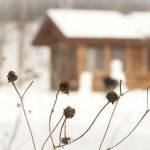
Living in a windy area is not uncommon in Britain and most people are used to it. There are things, however, that need to be considered, when living in a place where strong winds are of frequent occurrence. One of these matters is choosing fence panels, which withstand blustery winds.
The good news is that there are enough options to choose from when it comes to fence panels suitable for windy areas. It all depends on your personal preferences, in terms of considering privacy, aesthetics and wind resistance.
Now, let’s explore the best fence panels for windy areas so that you can make the right choice.
Table of Contents
Windproof fence panels that let the wind pass through
It is known that the best fence panels for windy areas are the ones that let the winds pass through. This means that the fence panels need to have gaps left between the boards, in order to release the wind pressure from the panels. The bigger the gaps between the boards, the lesser the stress on the fence.
There are some pretty reliable types of windproof fencing – a few of them provide larger space in between the panels, so the wind can pass through freely. These fence types, however, may compromise your privacy. Other kinds of fences may ensure better privacy but at the expense of not being so windproof. And, of course, there are some types that provide both privacy and wind resistance without compromising the aesthetics and great overall look of your garden.
In any case, entirely solid fence panels will not be the best option when choosing fencing for a windy area. When exposed to strong winds, solid panels will have difficulties resisting the pressure if there are no gaps to dissipate the wind.
Imagine as an example a dam and its dike – there are always some relief holes in the dike’s wall, so they can let the water through and its power is reduced, in case the water level rises drastically. It is similar to the situation with the fence panels suitable for windy areas – the gaps left between the boards will weaken the strength of the wind.
So, considering the above information, below you can see the best examples of fence panels for windy areas that you can choose from.
Slatted fence panels
This type of fencing offers a perfect balance between wind resistance and privacy. The panels consist of uniform, horizontal boards, fixed in rows with enough space between them to allow the wind to pass through, which ensures a fair amount of wind resistance while providing comfortable privacy. Last but not least, the slatted fence panels will contribute a great deal to the elegant, contemporary look of your garden.
Hit & miss fence panels
In the hit & miss fencing, the boards are alternately fitted on both sides of the panel. This creates an almost completely solid look of the fence and makes this type of wind-resistant fence panels the best choice if privacy is of high priority. At the same time, although appearing solid, the hit & miss fence panels have gaps between the boards, which allow the wind to pass through, reducing its strength.
Also, the hit & miss fence panels can be topped with trellis type of boarding. It lightens the solid appearance of the fence panels and gives a smart twist to the hit & miss wind-resistant fence. To note here, these sort of fences are not that strong against powerful winds because the holes in between the boards are rather small. Hence, as mentioned above, they are the perfect solution if you don’t want any prying eyes peeking through into your garden, but you still want some protection against high winds.
Trellis fence panels
These are the lightest and maybe, the prettiest fence panels suitable for windy areas. Their criss-cross pattern provides the best resistance to blustery winds, since the gaps formed in the panels are usually on the larger side.
This makes them probably the best option for fencing in windy areas, especially if reinforced with a strong base. Trellis fence panels are also perfect for growing climbing plants, which will reduce to a certain extent their single disadvantage – the total absence of privacy.
Picket fence panels
They are a well-known fencing classic, which is ideal for windy areas because of the large gaps between the vertical wooden boards. Picket fencing will do a great job if your only concern is to set your property’s boundaries or if you need to enclose some space in your garden for your dog, for example. This wind-resistant traditional fence will give your lawn or garden a cosy, countryside look.
However, your privacy will be slightly compromised as people would be able to see what’s going on in your backyard through the spaces between the boards.
Short open fence panels
Similar to the picket fence panels, the short open ones are great to use as setting boundaries around your home. The short, vertical panels with large gaps in between are perfect for windy areas, as long as privacy is not an issue. They will give your property a neat, rustic appearance, go for them if a countryside feel of your property is what you’ve been after.
Shadow box panels
This type of fence panels are pretty similar to the hit & miss kind of fencing. They provide the best possible privacy, yet allow air to flow through the gaps between the vertical boards, which are alternately fitted on the front and back side of the fencing. So, even though the shadow box fence panels are not the most wind-resistant ones, they surely are a better option compared to any regular and completely solid fence types on the market.
Additional preparation tips to keep in mind with a windproof fence installation
Now that you have chosen the fence panels that balance out best your privacy requirements, windproofing needs and aesthetic view, it is time to proceed to the next step – installing the wind-resistant fence panels. This is an important task, which determines the level of wind resistance, as well. The base, the way the posts are installed, as well as their type, are all important things to consider, when installing fence panels in a windy area.
So, here are some tips you may find helpful when going for a windproof fence installation.
A strong base for your fence is key
No matter how wind-resistant the fence panels are, if there’s no solid base underneath, the fence will not be able to withstand strong winds. The base is what keeps the fence panels grounded, so the stronger the base is, the better the fence panels will resist stormy weather.
Install your fence posts deep enough
This rule is especially important when it comes to windy areas. Fence posts that support fence panels in regions with frequent high winds need to be installed deeper than the regular ones. Usually, one-third of the wooden post needs to be dug in, in order to provide better stability of the fence. In any case, the minimum post length that has to go underground is three feet.
Reinforce the posts with concrete
If you decide to go with this step, it will definitely give you extra peace of mind. Installing wooden posts in concrete will make the windproof fence panels you choose even more resistant to blustery winds.
Go for concrete posts instead of wooden ones
Concrete fence posts are the perfect option for securing your fence panels in a windy area. They will remain stable for years, especially if reinforced with a proper concrete base. Along with an appropriate type of windproof panels, you will get the best fencing that can resist strong winds.
Update your garden landscape today! Get in touch with professional fence experts!
Enter your postcode to view our rates and availability in your area.
For questions about the services we offer visit our main site
The Bottom Line
So, you have various options to choose from, and combinations to make between different fence panels and post installations. It all depends on your priorities when it comes to the appearance, desired level of privacy and, of course, the wind-resistant properties of your garden fence. Also, you can always rely on our professional fence installation, repair and replacement services.
Did you find this article helpful? We’d love to find out in the comments below!
Image Source: Shutterstock | Prosper106




We currently have issues with the wind blowing up our wood fence. Might need to check the local fence company then.
What are repairpust pallets, can you buy them
I have read so many articles concerning the blogger lovers except this post is
genuinely a nice article, keep it up.
Thanks for the information, very helpful about the materials to use in a windy area.